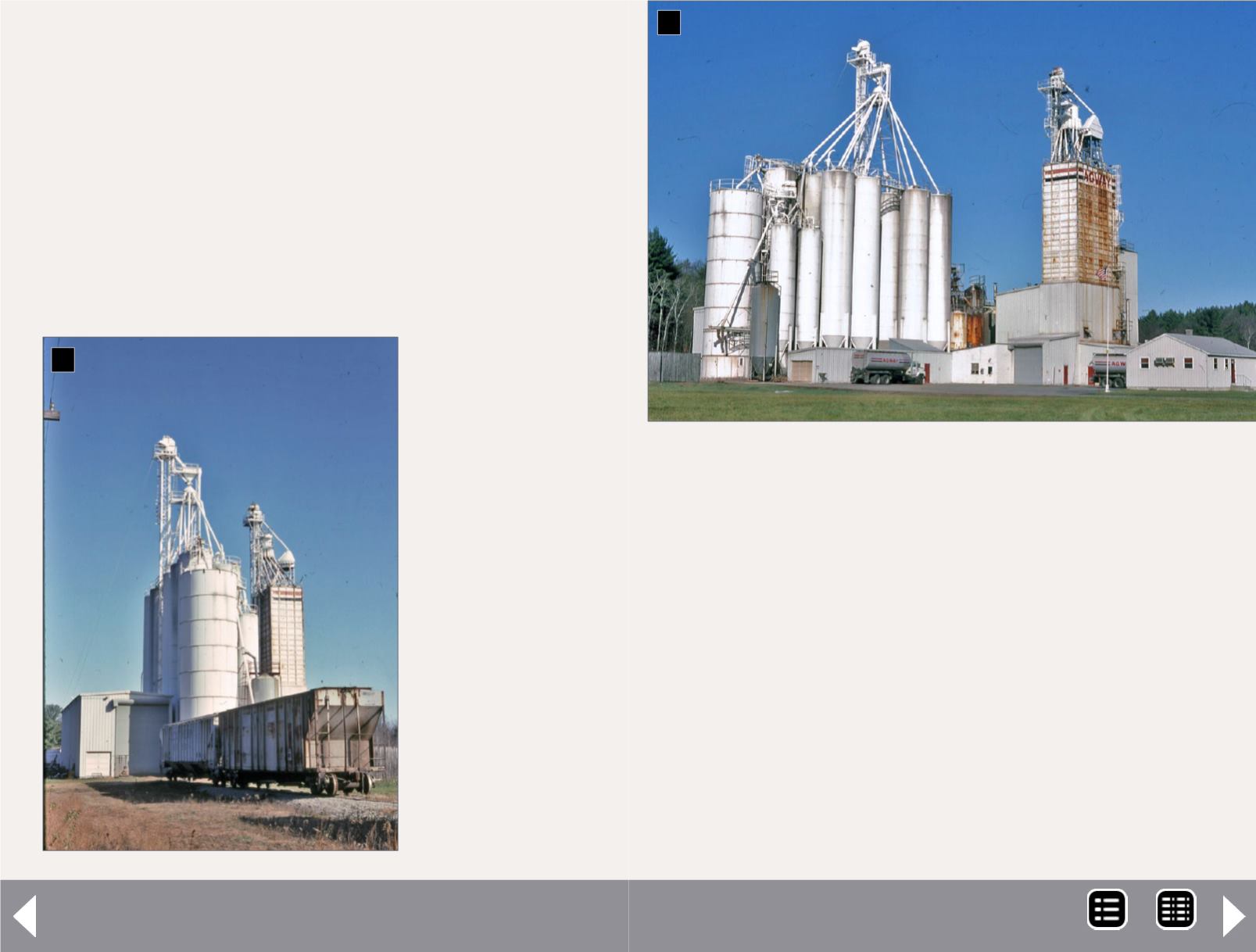
Agway Feed Mill - 2
M
entioning the words “Connecticut River” to most
New Englanders will conjure up images of a mighty
yet tranquil river surrounded by vast farmlands
and gently rolling hills. Mentioning those same two words to
a railfan can conjure up something even more inspiring – vast
farmlands, gently rolling hills, and beautiful scenery for rail
photography along the Connecticut River Line, or Conn River as
it’s affectionately
known. From its
confluence with
the Long Island
Sound to the Green
Mountains of
Vermont, the Conn
River remains one
of the most photo-
genic stretches of
2
Scratchbuilding a modern day feed mill ...
2. South side
of Bernardston
Mill showing car
unloading shed
with two covered
hoppers. Photo
circa 1991,
courtesy of Bill
Feindel.
– by Neil R. Schofield
Photos by the author
3. East side of Bernardston mill. Photo circa 1991,
courtesy of Bill Feindel.
railroad in New England. For over 150 years paper mills used
the Connecticut River and its tributaries to provide an abun-
dant water source for the paper making process, while feed
mills sprung up along the line providing feed and fertilizer for
the fertile farmlands up and down the Connecticut River Valley.
Up until the 1980s, both the Central Vermont and the Boston
and Maine railroads enjoyed a healthy source of traffic, primar-
ily from paper and agriculture industries. Unfortunately, the
last quarter century has not been kind to the paper industry.
Many mills located in northern New England that once gener-
ated solid strings of boxcar traffic have shipped their last rolls
of paper, leaving the agricultural industry to provide a mea-
ger amount of traffic to the remaining regional railroads in the
3
MRH-Sep 2014


